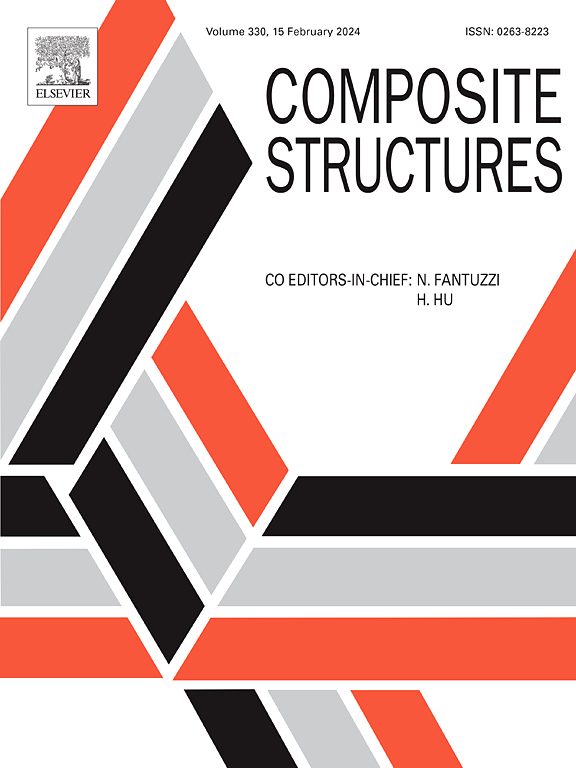Collaborative control of crack guiding and trapping in bioinspired interfaces on effective toughness
IF 6.3
2区 材料科学
Q1 MATERIALS SCIENCE, COMPOSITES
引用次数: 0
Abstract
Interface phases are frequently employed to allow deformation and energy absorption to improve the toughness of biological materials. To explore the design space, a combination of the phase field model and 3D printing is adopted to investigate the fracture behaviors of the interface phase and the effective toughness of bioinspired materials. For the heterogeneous interface phase with smooth Young’s modulus, the period number of the smoothing modulation of Young’s modulus is positively correlated with the far-field J while it has a slight influence on the near-tip J. It indicates that effective toughness can be enhanced by increasing the period number of Young’s modulus. In the case where two Young’s moduli alternate along the interface, the effective toughness is highly dependent on the inclined angle of the compliant-to-stiff interface due to stress fluctuations caused by mismatched elastic parameters and crack nucleation. The experimental test of a 3D-printed bioinspired gradient interface indicates that weak interface phases guide crack propagation while strong interface phases trap cracks. For the structured interface phase, interlocking regions prevent the crack from continuing to propagate and the effective toughness exhibits the directional asymmetry. In all, crack guiding and trapping in the interface phase collaboratively control the effective toughness.
求助全文
约1分钟内获得全文
求助全文
来源期刊

Composite Structures
工程技术-材料科学:复合
CiteScore
12.00
自引率
12.70%
发文量
1246
审稿时长
78 days
期刊介绍:
The past few decades have seen outstanding advances in the use of composite materials in structural applications. There can be little doubt that, within engineering circles, composites have revolutionised traditional design concepts and made possible an unparalleled range of new and exciting possibilities as viable materials for construction. Composite Structures, an International Journal, disseminates knowledge between users, manufacturers, designers and researchers involved in structures or structural components manufactured using composite materials.
The journal publishes papers which contribute to knowledge in the use of composite materials in engineering structures. Papers deal with design, research and development studies, experimental investigations, theoretical analysis and fabrication techniques relevant to the application of composites in load-bearing components for assemblies, ranging from individual components such as plates and shells to complete composite structures.
 求助内容:
求助内容: 应助结果提醒方式:
应助结果提醒方式:


